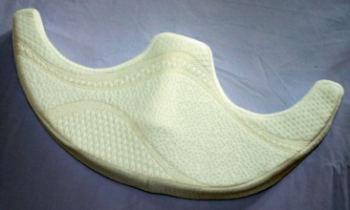Nearly half of U.S. academic hospitals do not post required data on costs for hand surgery, reports a study in the August issue of Plastic and Reconstructive Surgery®, the official medical journal of the American Society of Plastic Surgeons (ASPS).
“Our analysis shows that many hospitals do not meet the federal price transparency rule for common hand surgery procedures,” comments Ben S. Rhee, BA, a medical student at The Warren Alpert Medical School of Brown University in Providence, R.I. “We also found evidence of an incongruous relationship between hospital pricing and the socioeconomic characteristics of the communities they serve.”
How Many Hospitals Post Required Hand Surgery Price Data?
Under the Centers for Medicare & Medicaid Services; (CMS) 2021 Hospital Price Transparency rule, U.S. hospitals are required to provide “clear, accessible” online information on standard costs for hospital services. The goal is to help patients to shop and compare prices, and to make more informed decisions. However, previous studies have found that some hospitals do not yet follow price transparency rules. Those studies also reported unexplained variations in posted prices.
Rhee and colleagues assessed hospital price transparency data for three common hand surgery procedures: carpal tunnel surgery, hand (metacarpal) fracture surgery and surgery to remove ganglion cysts of the wrist. The study focused on academic hospitals under the presumption that these university-affiliated hospitals would be more likely to comply with the price transparency rule.
Of 261 hospitals included in the study, 48.6% did not provide required pricing data—discount cash prices or insurance-specific negotiated prices—for any of the three procedures. Price information was most likely to be posted for carpal tunnel surgery and least likely for hand fracture surgery.
‘Overarching Trend of Noncompliance’ to Price Transparency Rule
To examine how price transparency data was affected by the socioeconomic characteristics of the communities served, the researchers divided hospitals into two lower- and higher-income groups: median household income of about $59,000 versus $72,000. Average uninsurance rates were 15% and 7%, respectively.
For ganglion cyst excision, the average insurance-specific price was higher for hospitals serving areas with lower incomes and higher uninsurance rates: $2,780, compared to $1,700 in higher-SES areas. For the other two procedures, prices were similar between groups.
On analysis of posted prices, hospitals serving lower-income areas had greater variability in pricing for all three procedures. “This means that some patients in lower-income areas are paying much more and others much less, compared to patients in higher-income areas,” Rhee says. “In this scenario, patients with less financial means are more vulnerable to extreme prices—and thus may pay more out-of-pocket for needed hand surgery, compared to patients in wealthier areas.”
Adding to previous studies, the findings show “an overarching trend of continued noncompliance by hospitals,” even several years after the pricing transparency rule went into effect. Although CMS can enact financial penalties for hospitals that do not post required data, few hospitals have been penalized so far. The researchers note some limitations of their study, including the focus on academic hospitals.
Rhee and coauthors conclude: “Encouraging standardization of price files, financial incentives for consumer-friendly displays of all services and more state all-payer claims databases can help bridge these gaps in pricing transparency and better inform patient choice in their healthcare.”





